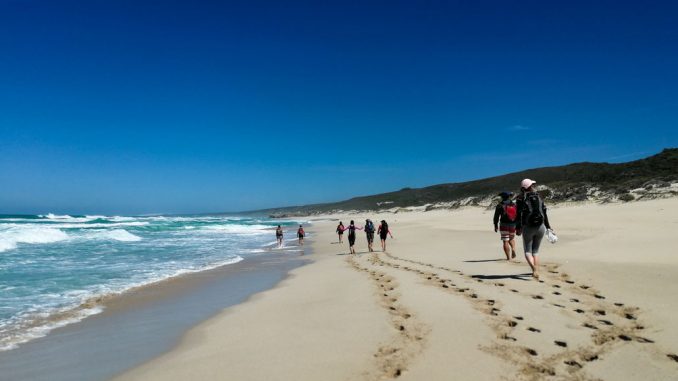
Beauty: 4.5/5 – The trail traverses through varied terrain, from some of the most pristine fynbos mountain areas, to striking orange cliffs that offer unparalleled views across the Indian ocean, to long stretches along blinding-white beaches with incredible calcrete formations and rockpools full of marine life.
Difficulty Rating: Day 1, with a steep initial uphill, gets a 6/10, while the other days get a meandering 5/10.
Technical Rating: Easy to moderate standard walking. Day 1 and Day 2 are slightly more technical as the trail follows a rocky mountain trail, while Day 4 can be quite tiring due to walking on soft sand along the beach.
Situated within the ecologically diverse and breath-taking De Hoop Nature Reserve, the Whale Trail is an approximately 55km slack-packing multi-day hike. De Hoop is a pristine nature reserve area about three hours from Cape Town on the east coast of South Africa, known mainly for its exquisite calcrete formations, huge sand dunes and abundant wildlife.
The Whale Trail starts at Potberg Hut, where you will spend the night before – this gives your group the chance to be briefed on the hike by the rangers (including information on the terrain, wildlife, flora, safety, emergency evacuation, cellphone reception etc.) and pack your food and luggage into the containers which are provided on the slack-packing option (transported daily to the huts).
Day 1: Potberg Hut to Cupidoskraal (15km – tough)
Day 1 of the Whale Trail is the longest day, and by far the most difficult day of a (relatively easy) multi-day hike. It starts with a roughly 3-4km incline to the highest point of the trail (611m), and we were delighted to have many sightings of the gliding Cape Vultures overhead as we ascended. Sadly, the mist and rain came in thick and fast just as we reached the high point and we were unable to see the spectacular views across the reserve in the south-east, nor the Breede River to the North. However, although late in the season, the fynbos put on a stunning show – Ericas and Proteas were flowering in abundance and the pink, red, yellow and orange hues offered bursts of colour across the grey landscape.
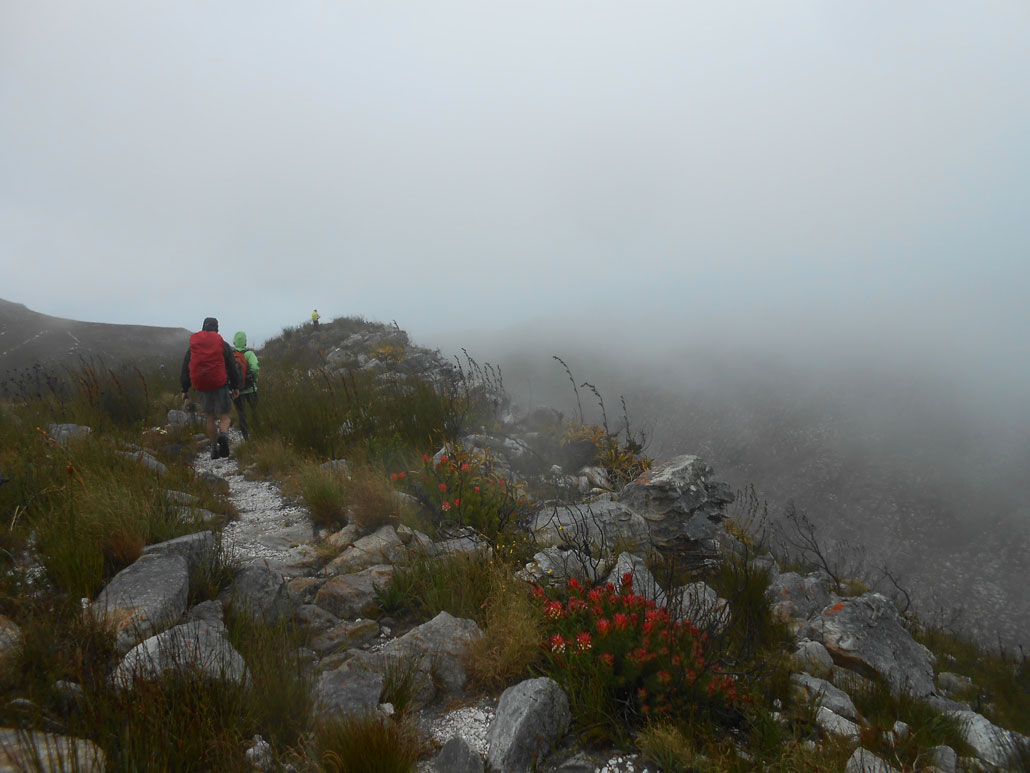
The trail then descended along the watershed above Grootkloof, and meandered up, down and along Potberg mountain until a final descent to Cupidoskraal. The trail is well marked but more technical than the days that follow, and became somewhat water-logged in parts due to the rainy weather. One needs to watch out for slipping on descents. We arrived at Cupidoskraal cold, wet and hungry – but luckily it is a cozy hut with a large fireplace. We quickly boiled up some tea, placed our soaked garments, shoes and socks in front of the fire to dry out, and proceeded to nap the rest of the afternoon away.
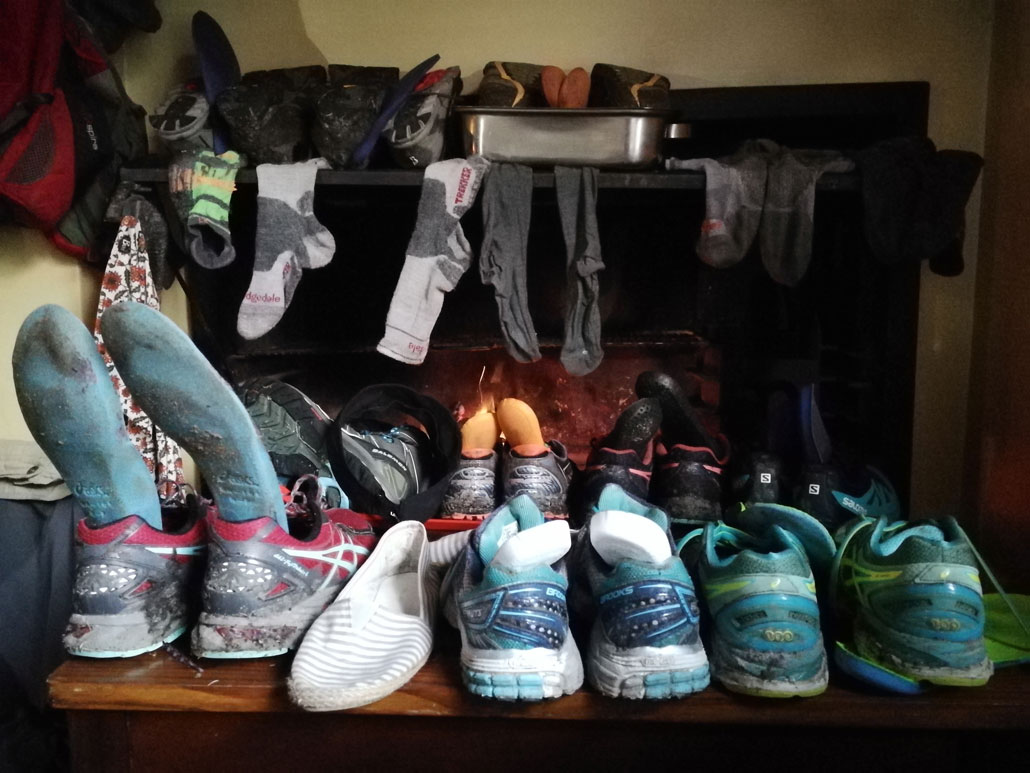
Cupidoskraal is the only hut (on-trail) that has no spectacular views – the ‘stoep’ overlooks a grass lawn towards a gum tree forest. It thus made for the perfect spot for an evening spent indoors – we whiled the evening hours away playing table games and cooking, then eating a delicious Thai green vegetable curry.
Day 2: Cupidoskraal to Noetsie (14.7km – moderate)
We awoke to gentle but consistent rain on Day 2, and despite the long distance ahead, a few of us decided to wait a little bit after breakfast to see if the weather would clear – not looking forward to another day of being soaked through when our shoes had only dried out after a full evening in front of the fire. Eventually the skies cleared enough for us to decide there was no imminent threat of being rained on, and we ventured out.
The trail begins with a bit of a climb up and along the crest of Potberg, with unparalleled views across the ocean and the Breede River. It feels as if one is walking south towards the sea, but the initial direction of walking is actually slightly north-east – it is quite disorientating to have the ocean on your right-hand side (you’ll understand this once you do the hike)! Once again, we were awestruck by the beautiful, lush fynbos and couldn’t quite believe the colours and abundance of blossoms so late in the season.
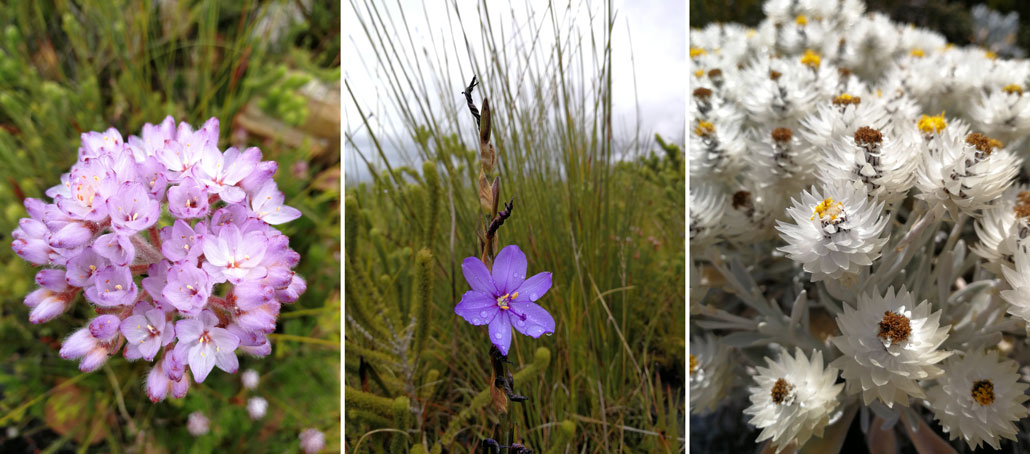
The weather was temperamental – changing quickly from sunny and hot, to rainy – with an ice-cold, wild wind on top of Potberg that made our bones ache. Once one tops out on Potberg, there is a relatively straight forward and flat stretch that extends for a few kilometres. It is worth stopping for tea and lunch if the weather allows. The route then has a steep descent onto limestone hills, where both the terrain and flora dramatically change due to an overlap of Table Mountain sandstone geology with coastal limestone vegetation (called ‘ecotone’).
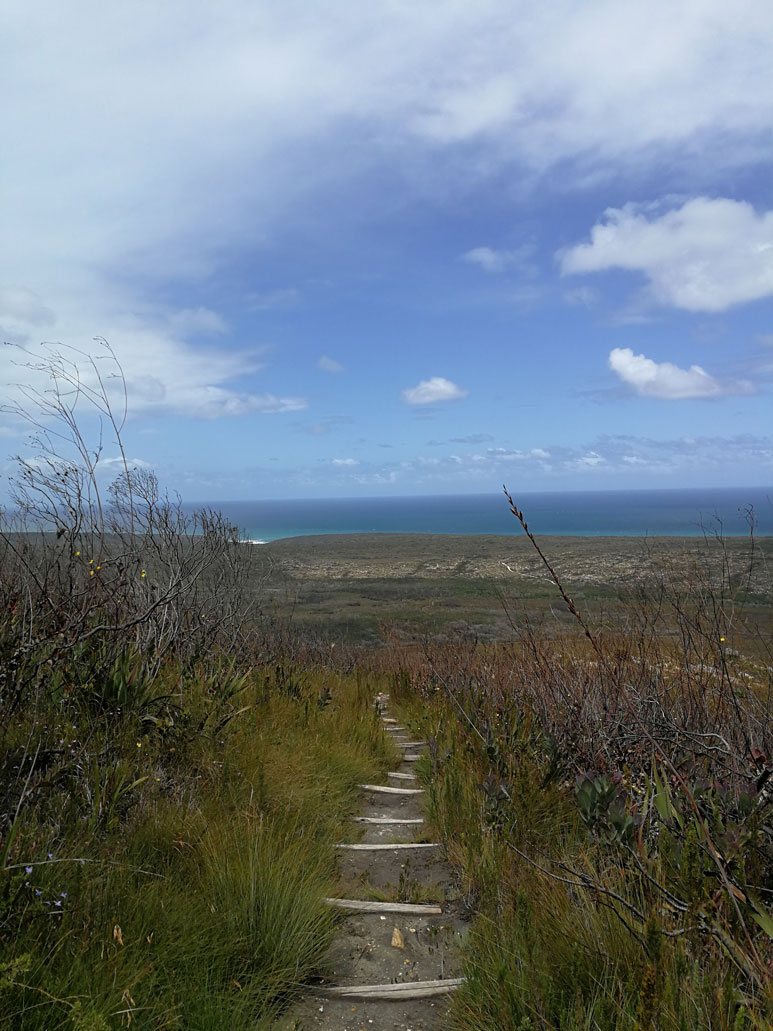
You will walk past an extensive thicket of the destructive Port Jackson as you enter this ‘ecotone’ area, which most locals will find quite disturbing in such a pristine wilderness area – but rest assured that this part of the trail is under a natural and active alien-plant eradication programme using an indigenous fungus. From there, it is not far to Noetsie – and you will want to get to this special hut as early as possible to enjoy the incredible location.
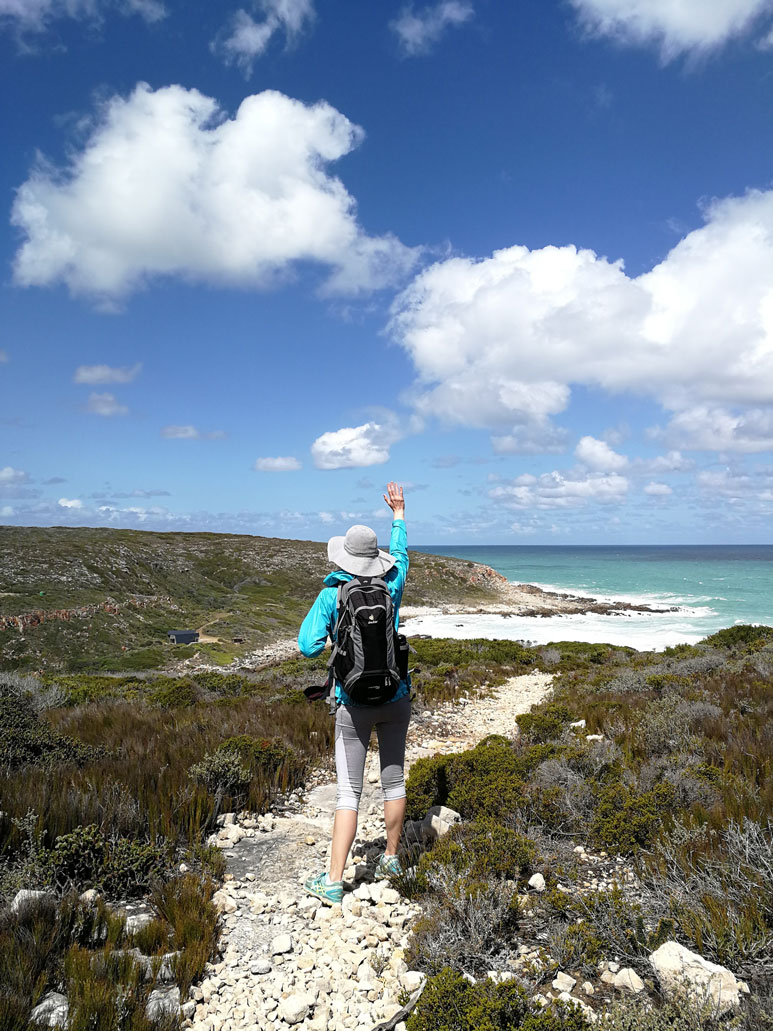
Noetsie Hut was recently rebuilt after a massive storm washed away the previous hut, and careful architectural and ecological design elements have been considered in the rebuilding of the hut – which is actually made up of two separate, wooden structures. Despite the later start, we managed to arrive in time to have a long, lazy afternoon exploring the rockpools and nearby vlei, watching the few whales still lolling in the bay, and having short cat naps on the sun-kissed rocks directly in front of the huts.
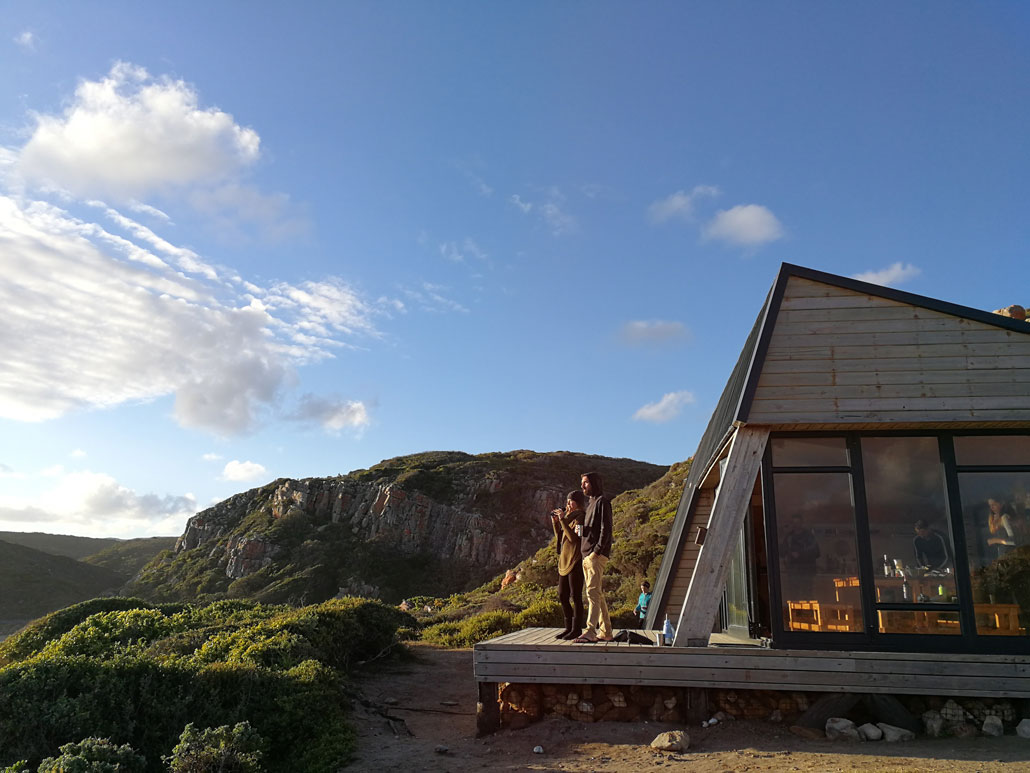
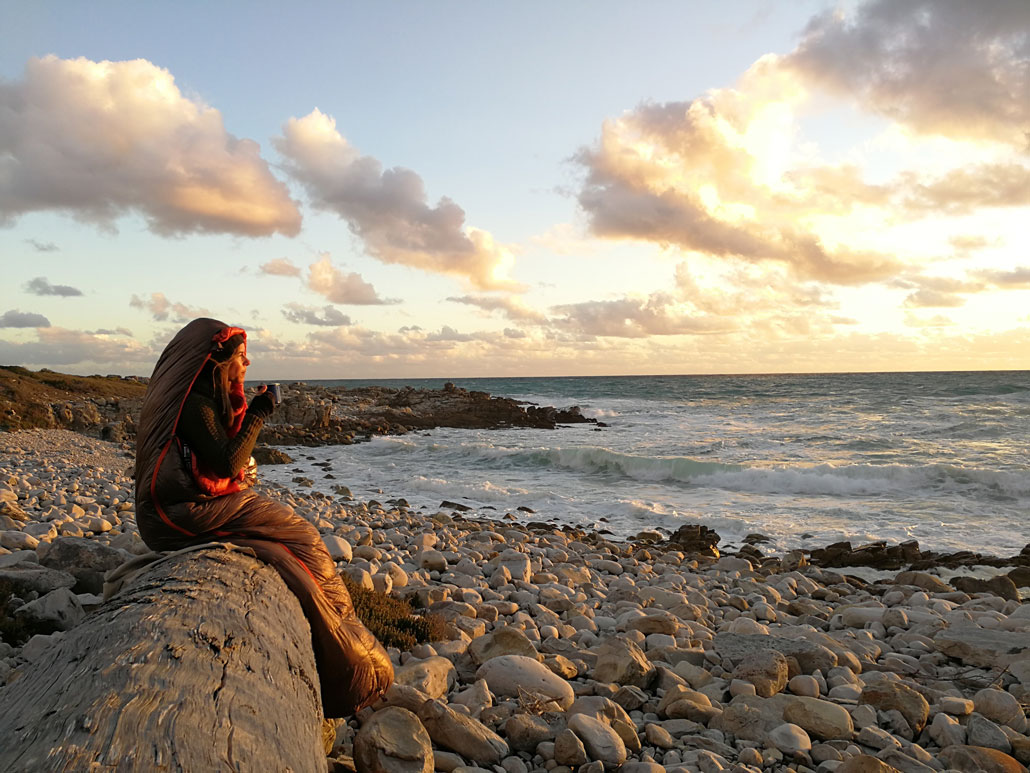
Noetsie offers two fantastic braai areas – one that is sheltered from the wind between the award-winning huts, and the other a sea-side ‘boma’ just below the huts. However, it has no indoor fireplace or braai area, so if the weather turns it is not the ideal night to have a braai (something to consider if one is planning meals in advance). We were lucky enough to have a beautiful and clear (if chilly) evening – and spent it around the fire at the ‘boma’ feasting and laughing as the light turned golden, then darkened into night.
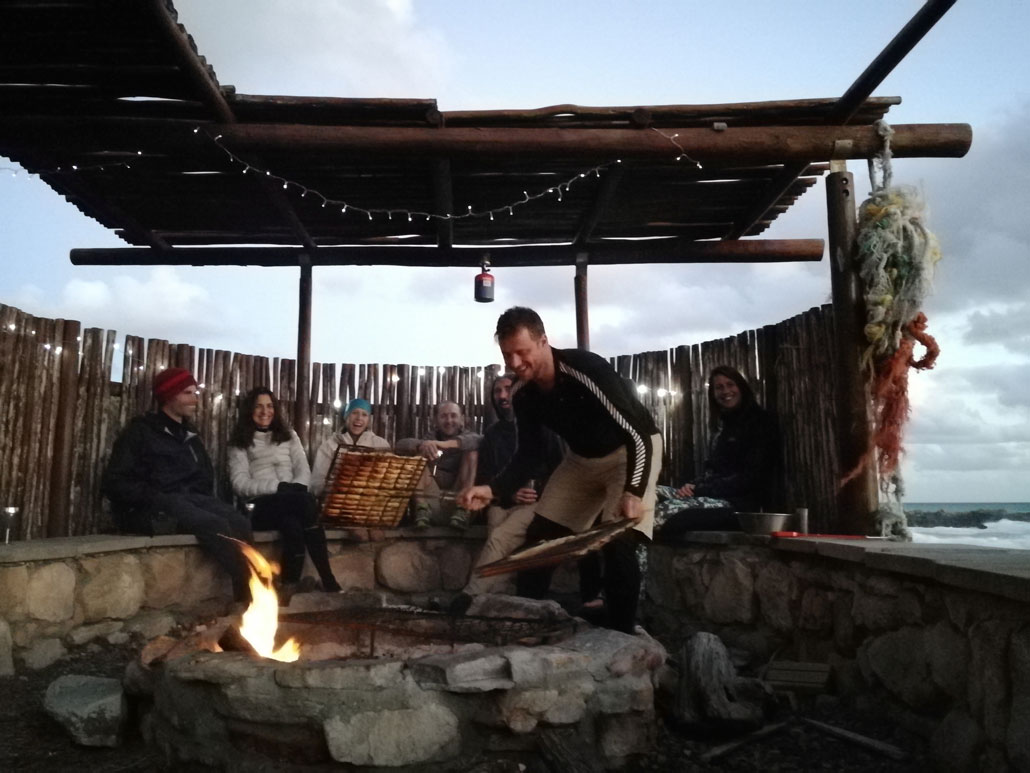
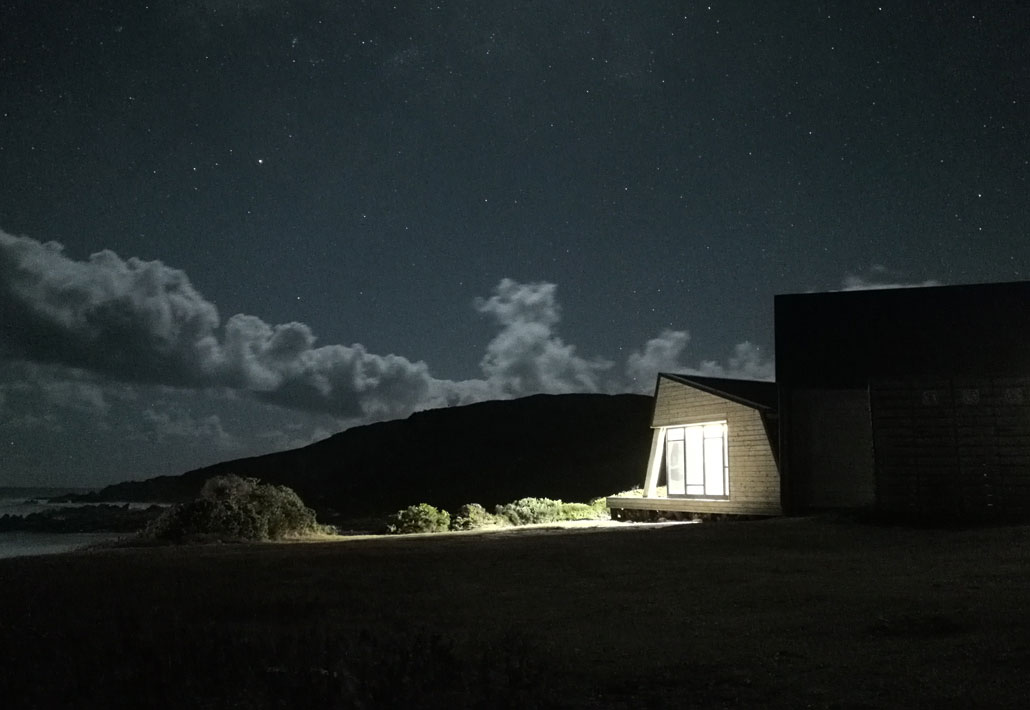
Day 3: Noetsie to Hamerkop (7.8km – easy)
Early on, we had run out of water at Noetsie, so in the morning a few of us decided to start the day with a sunrise dip in our own ‘private’, natural rim-flow pool – with waves breaking overhead, it was a truly exhilarating experience.
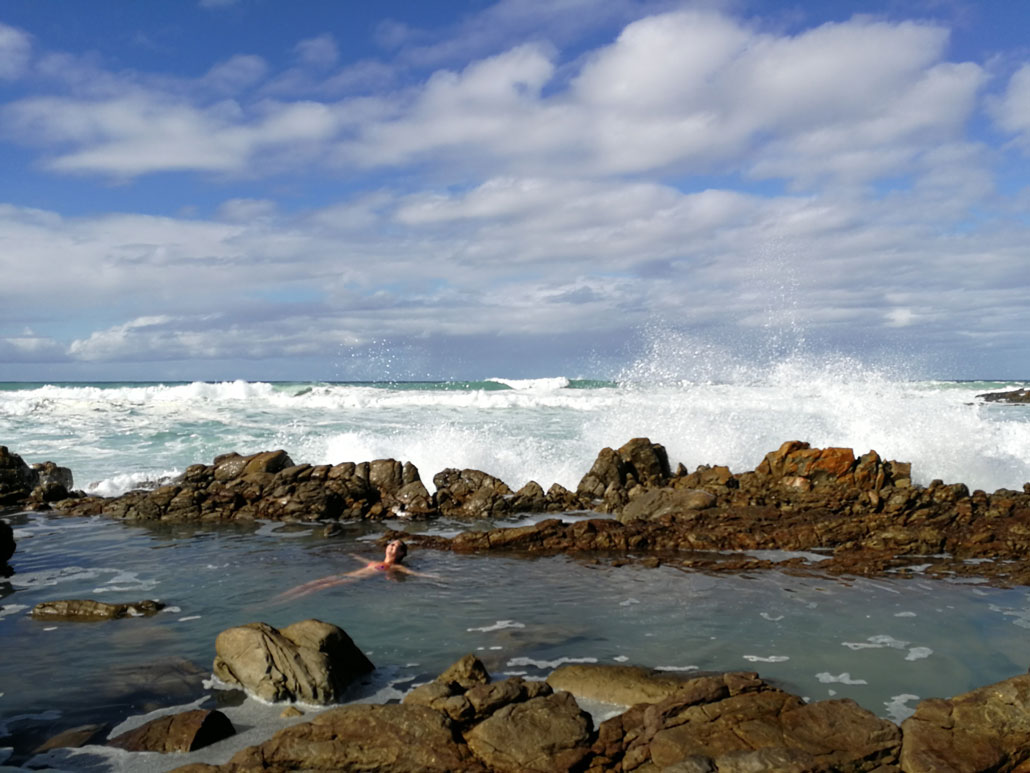
Our team was reluctant to leave the beautiful setting, but having done the Whale Trail before, I knew the section of the trail that lay ahead was one of the most breathtaking. One of the shorter days, it is absolutely worth taking your time on this third day. I chose to walk alone initially, taking my time to breathe in the sea air, admire the natural ‘bonsai’ gardens (tiny fynbos plants that had made their home in the weather-worn cracks of the limestone cliffs), and watch the ever-changing clouds far on the ocean horizon.
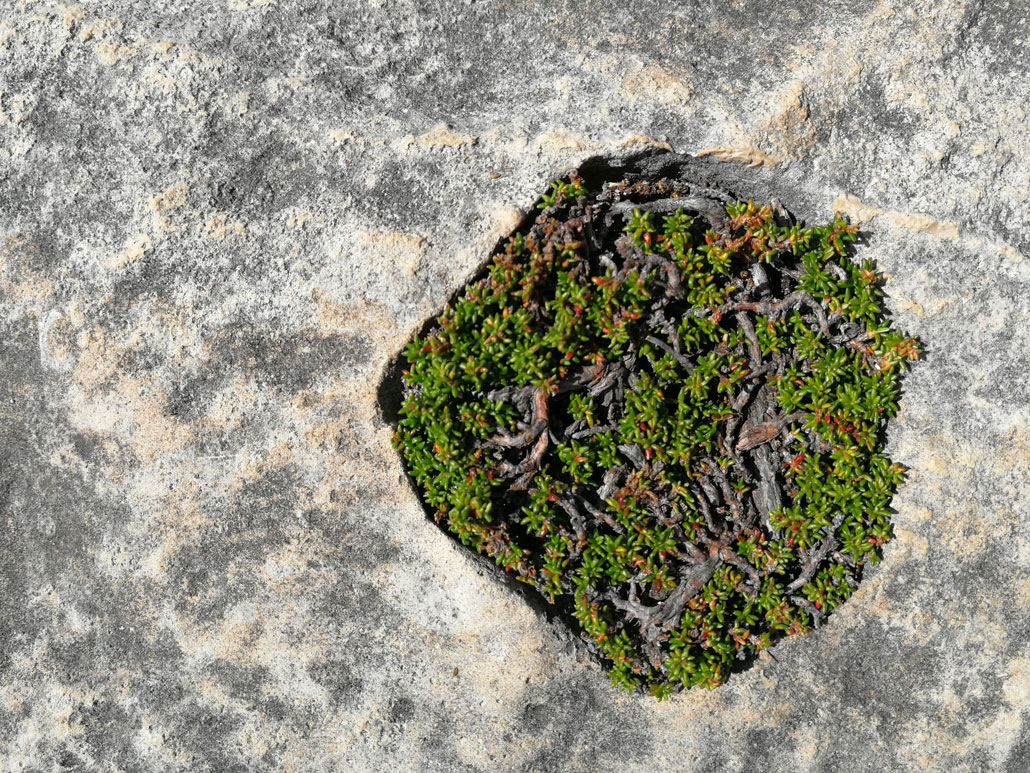
Stilgat – a beautiful bay below the cliffs with deep tidal pools decorated with bright sea anemones and full of tiny marine life, that offers an exquisite rest spot for a tea or lunch break or for those who want to swim or snorkel – was sadly closed to hikers due to maintenance and we had to pass by this fantastic little bay.
The trail continues to wind along the limestone cliffs, with a steep drop to the left for most of the day. While there are many lookout points, it is recommended that one does not wander off the trail or attempt to climb down the cliffs to investigate some of the natural caves that one can see from the path.
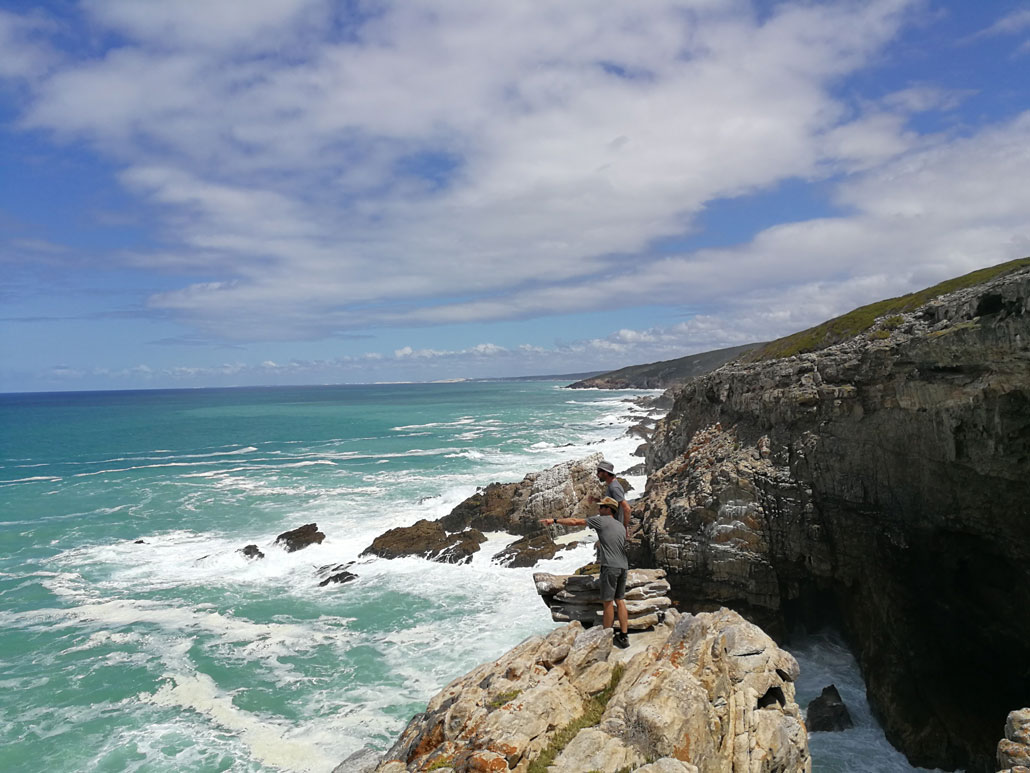
In season (August to October), this makes for the best day to whale watch – previously, I’d counted 27 southern right whales in one tea break. This time, nearing the end of the season, we counted ourselves lucky to see just five of these magnificent beasts and their babies over the course of the day.
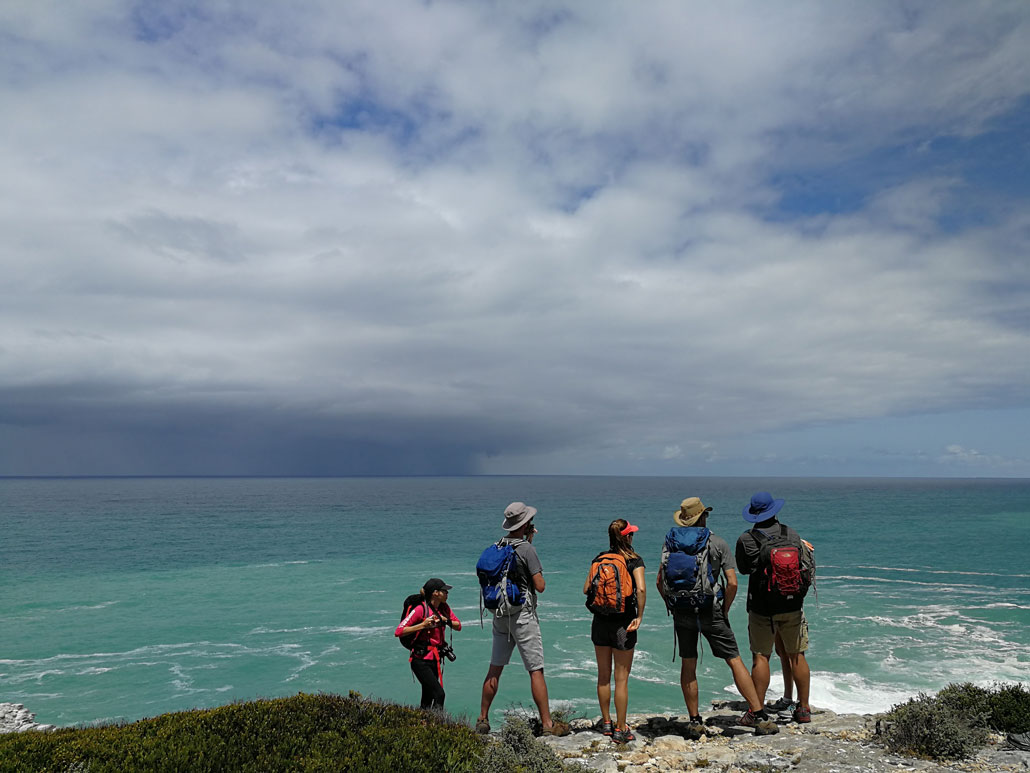
The last part of the third day, the cliffs merge with the shoreline, and one walks pasts a number of coves before walking the last short distance to Hamerkop Hut.

If you are thus inclined (and everyone should be), it is worth carrying a packet to collect rubbish on this section – as the tides wash up multitudes of plastic bottles, cans and other rubbish and deposit them in the small, accessible bays – before another high tide collects the litter and washes it back out to sea to wreak havoc on sea life. It was a sad end to an otherwise exceptional day to see the sheer amount of debris that came from the ocean and was strewn in this otherwise pristine area.*
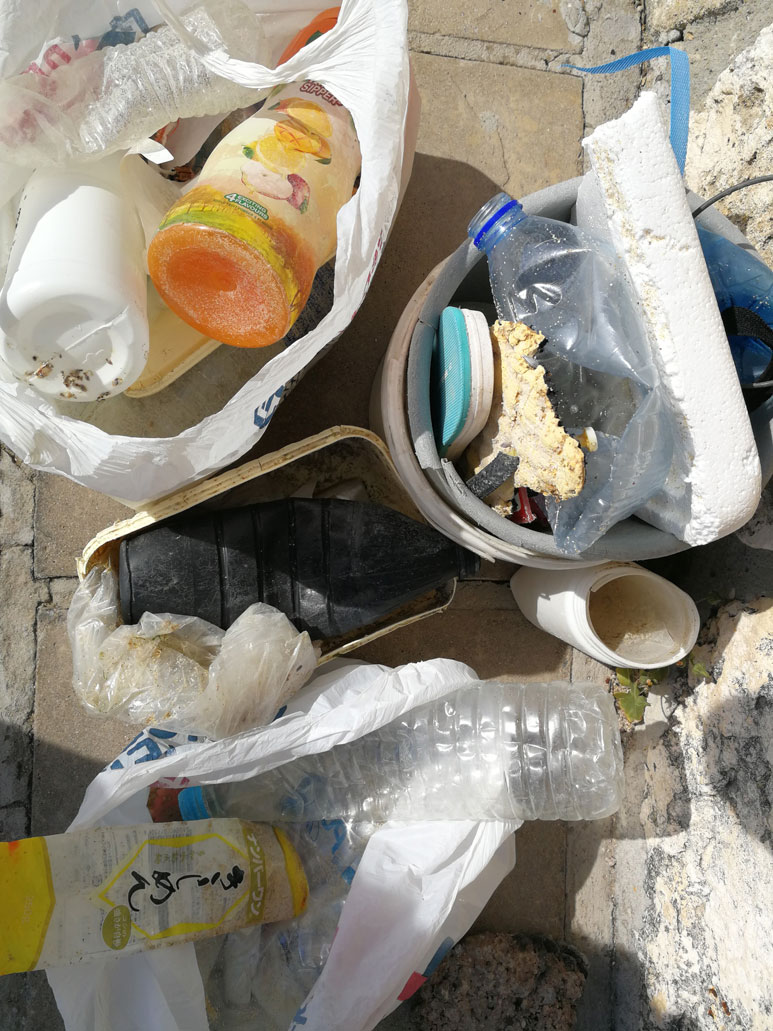
It is highly recommended to leave enough of the afternoon available to enjoy a beach meander (for those who still have fresh legs), or sundowners on the balcony at Hamerkop – which offers expansive views across the dunes and ocean. We made a delectable cheese platter and settled down to enjoy both the sunset and the motley selection of alcohol that was left over – which may have later led to the discovery that, with a bit of effort, a headlamp and a colander make for an excellent disco ball!
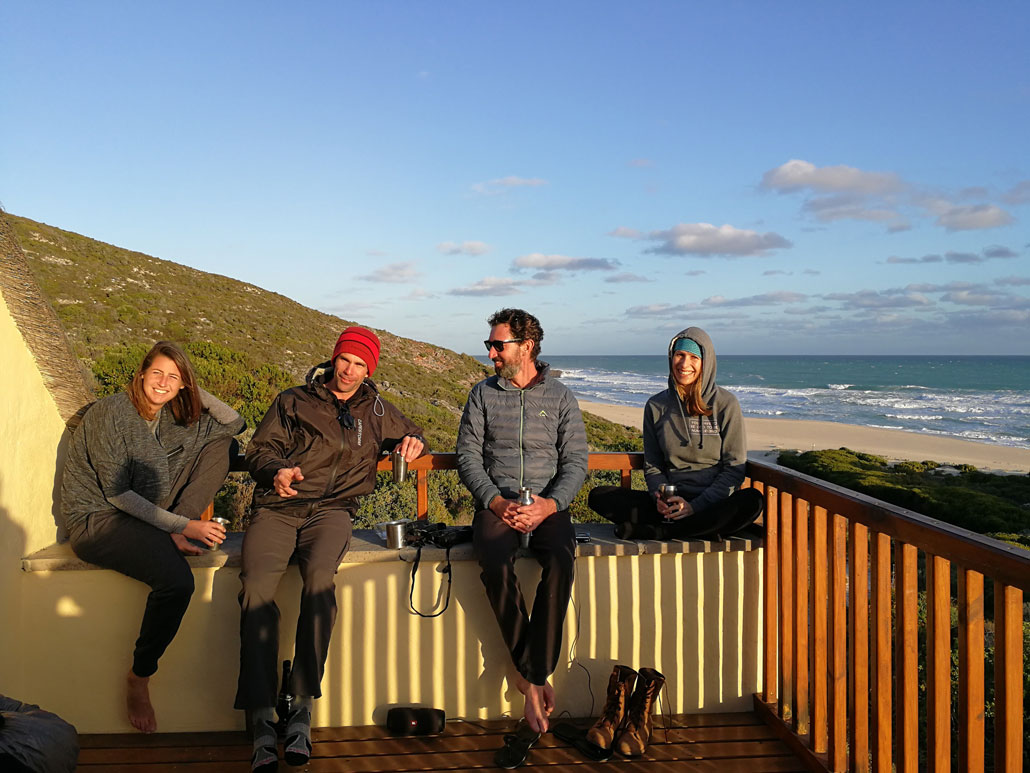

*My personal recommendation would be that the Whale Trail management steps in to manage this area – either cleaning it up regularly or requesting all hikers to carry rubbish collection bags and pick up any litter that they may see, thus preserving the trail for the next group as well as protecting the fragile ecosystem from further pollution and damage.
Day 4: Hamerkop to Vaalkrans (10.5km’s – moderate)
Much of the fourth day is spent walking on soft beach sand, which can be quite strenuous, especially if the day is hot – take a lot of drinking water. The trail meanders off the beach and onto the cliffs at some points, but only really leaves the beach in the last few kilometres of the day. Be sure to keep an eye out for the tracks of previous groups or the concrete distance markers which guide the way.
The trail follows the shoreline closely and offers a close-up experience of the impressive yet fragile calcrete formations, shaved away into curious shapes by eons of wave action, as well as glimpses into the life-rich tidal pools. There are ample opportunities to swim, but be careful of rip-tides and currents which can be extremely dangerous.
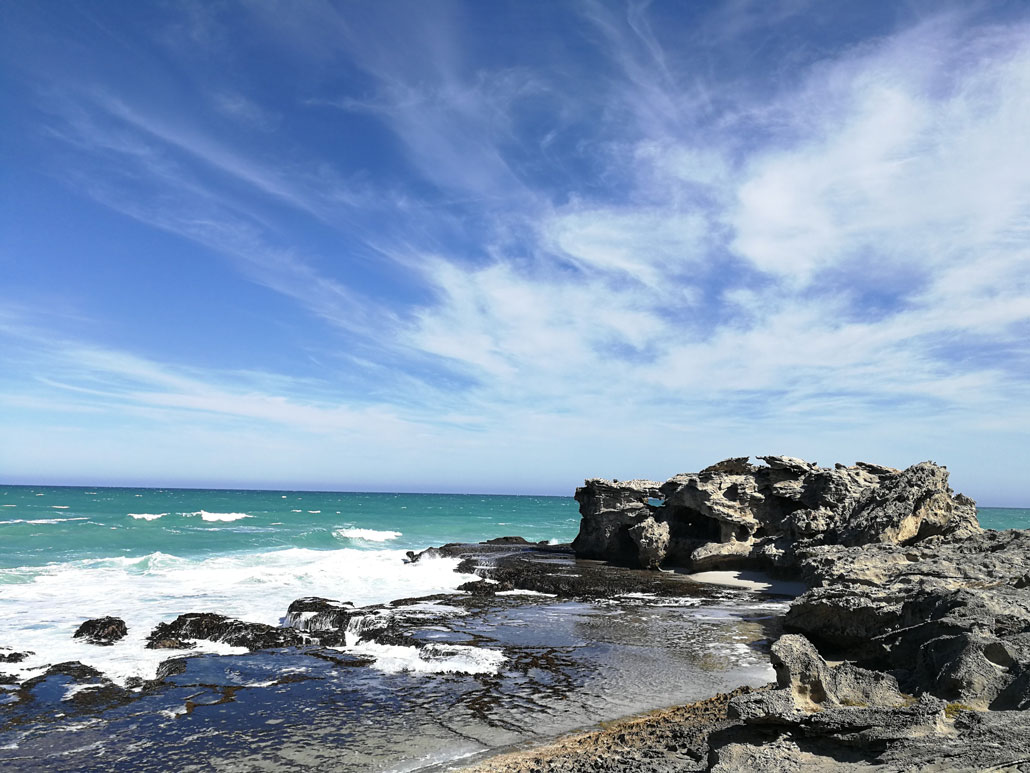
Knowing it was our second to last day and not wanting this incredible hike to end, half of our group felt the urge to take things really slowly, and stopped to swim, snack or enjoy the incredible scenery every kilometre or two, truly sinking into the experience.
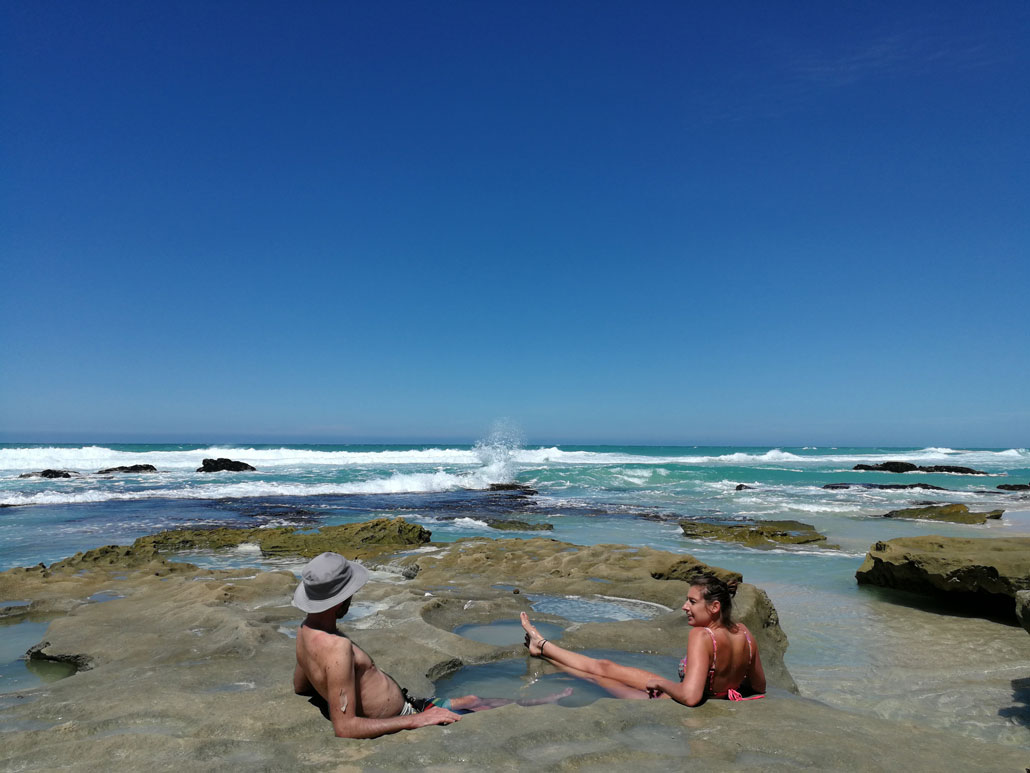
We arrived at the extraordinary Vaalkrans Hut in the late afternoon, with enough time left to nap in the sun-warmed nooks of the surrounding craggy cliffs. Vaalkrans Hut overlooks a narrow bay that seems to suck in huge waves that crash onto the sides of the cliffs, with far-reaching sea-sprays that shower the cormorants, terns, and swallows wheeling and diving over their nesting spots in the cliff face. It makes for a breath-taking sundowner setting and we sat in companionable comfort, munching on a smorgasbord of cheese, crackers and preserves as we watched the sky turn from flaming orange to deep blue.
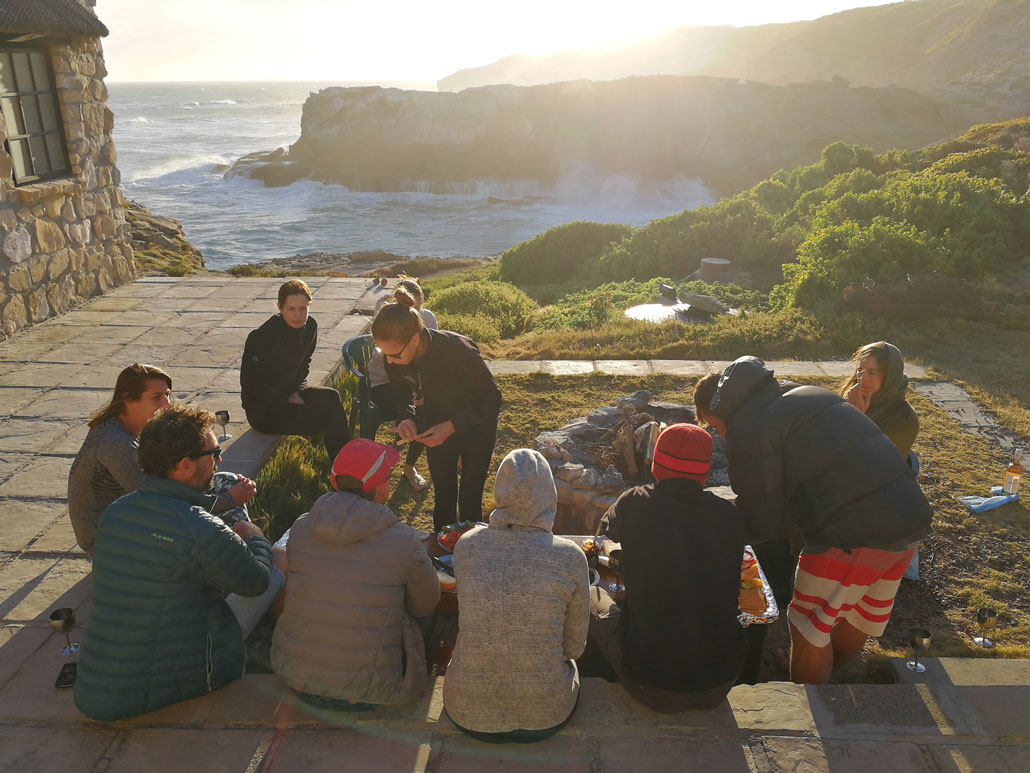
Day 5: Vaalkrans to Koppie Alleen (7km – easy)
The final day the trail passes through thickets of coastal fynbos, and dips down into secluded coves. We took our time and had a long, lazy lunch together in one of the bays, playing beach bats, lunching and swimming in the rockpools.
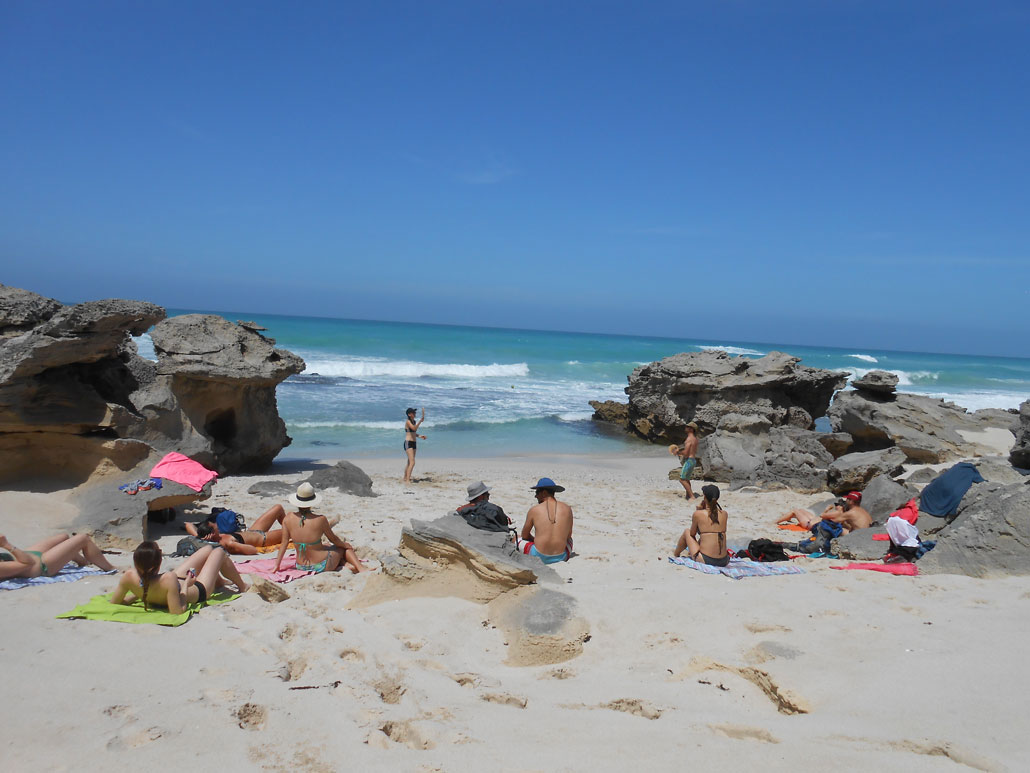
It made for an excellent final reprieve, but we ran out of time to spend at the stunning, aquamarine Hippo Pools at the end of the hike near Koppie Alleen, knowing that our shuttle was waiting for us to return us to Potberg and our vehicles. Despite the shorter distance, it is recommended to give yourself enough time to enjoy the final hours of the trail and requesting the shuttle to come later in the day – in particular, to give your group time to stop along the way and to explore the inviting Hippo Pools. The boardwalks near Koppie Alleen were laid to preserve the sensitive dune ecology and it is important to stay on the trail at this point.
Advice:
- The Whale Trail is one of the most remarkable hikes in South Africa; however, it does come at a fair price of ZAR2195, which excludes the slack-packing option at an additional fee of ZAR520 per person for a 60 litre container box. True to the strapline “It’s more than a retreat, it’s total surrender”, it is well worth the investment and makes for an exceptionally restorative mini-break.
- Be prepared for all weather conditions – there is very little shelter en-route on any of the days. Good sunscreen and a broad hat is crucial, as is a good weather-proof and rain resistant jacket.
- Carry newspaper for drying shoes if rain is predicted. Likewise, if you have a portable drying line and pegs, it is worth carrying. There was very little facility for our group to air and dry out our drenched clothing. Ziplock bags are critical for storing items that need to stay dry, like mobile phones.
- Contact lens cases can be used to take small amounts of spices – important for flavoursome meals at the end of the day.
- If you can, take along a string of battery-operated fairy lights – they make for an essential mood enhancer.
- Not all the huts have dish towels, dish-washing liquid or washing up sponges – it is worth carrying your own.
- We can highly recommend splitting your group into cooking teams – each team plans and prepares a meal for one night, and the rest of the time can relax.
- Earplugs are crucial for light sleepers – the bedrooms are dormitory style with bunk beds, and snoring by the heavy sleepers can make the shared sleeping arrangement quite unbearable.
- August is the best time to see the migrating whales, whereas September and October are the best months to see the flora.
- It is worth packing light, especially in order to fit in more luxurious food items as there is a limit to the number of boxes that can be portered under the slack-packing option. It was paramount to our group that we ate well and the relevant sacrifices were made in order for us to enjoy a very rewarding sundowner cheese platter every evening, as well as a few extras like fresh vegetables (which one starts to crave after the first day or two), Amarula cream for nightcaps, marshmallows etc.
For more information and bookings:
CapeNature Central Reservations
Tel: +27 (0) 21 483 0190
Email: reservation.alert@capenature.co.za
Website: www.capenature.co.za


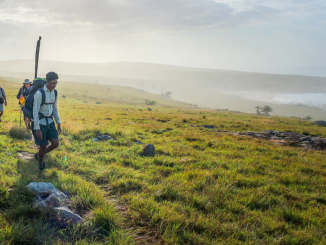
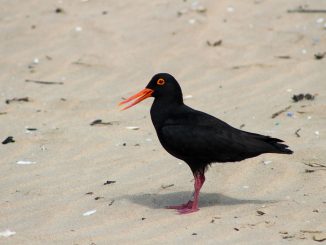
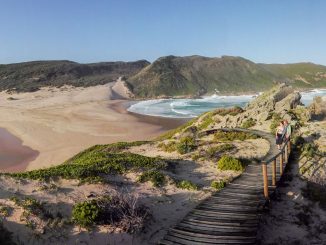
I totally agree with the beach clean up. I did the trail in November 2017 and picked up a big black bag of rubbish which included a neon tube possibly from a boat.
There is only cellphone reception for Vodacom and Cell C. So if there is an emergency and you do not use Vodacom or Cell C you have a problem.
Lens cleaner is a must. With the sea air and rain your camera lens needs to be cleaned. We had a lot of flies on day one and ants on day 3. Finding a rest spot without ants/flies was a challenge
We were lucky with the weather and had stunning views.
Excellent tips! Thank you Irene!
very interesting article. beautiful photos. Some thought was given when they were taken. The trail is getting expensive now. Is this to pay for upgrades?It started off at about R900 or less when first opened. Kelvin Smallwood
Hi Kelvin, thank you so much, I am glad you enjoyed the pictures – not terribly hard to take a good photo in such beautiful scenery 🙂 Re the cost, I am not sure. CapeNature would be best placed to answer, but I suspect it would be for maintenance or upgrades (I am aware that they are closing the trail next year for 3/4 months in order to perform maintenance). However, note that the cost is far less in off-peak season at ZAR1695 per person.
Thank you Dania – most informative and such stunning pics.
Hi there,
A group of us did the Whale trail and it was amazing. Yes, a lot of debris about, I think from fishing trawlers and ships, cleaning it will be a mission. We had good cell phone coverage, too much to my liking! A little maintenance work to huts is needed here and there which, I’m sure, will be done at some stage as Cape Nature is generally on point. This certainly is a trail to be repeated.
How much water did you take per day and can one gill up water bottles at each but? How did you keep cheese fresh – are there fridges in huts?
Thanks for very informative article
Hello Andrea, we did the trail 2 weeks ago. Weather was amazing and over catered on the warm clothes…but anything can happen with coastal weather. Yes you can fill your water bottles at the huts. The first 2 days inland/and strenuous were very hot and we drank lots of water. U need at least 2 liters in your day pack. Except for first night there are no fridges! You can pay for an extra 2 boxes (per group of 12, being cooler boxes which you can supply yourself)We made sure our food was frozen solid and vacuum packed. This way we still ate like kings on the last night (fillet, smash, butternut, corn, gravy). The only thing missing was ice for our wine and g&t’s. this is something Cape Nature needs to address. Ice….come guys, so easy for you to deliver on your rounds when you deliver our boxes. We would have been happy to pay a fortune for it! Showering at the huts was also a challenge, but……all part of the fun and lots of laughing. Scenery is truly beautiful. If you enjoy knowing names of the flowers, fynbos, proteas, birds etc, make sure you have a summarized list for the area – something I didn’t do! So to answer question about the cheese, yes it’s possible.. 🙂
We are a couple that would like to hike the Whale Trial between August and September 2020, can we join someone’s group (we do not want to do it alone)? Please send us information about your booking and plans.
Hi Jaco, please post your question on our community forum for more feedback from other hikers: https://community.hikingsouthafrica.co.za/
For booking information and availability, you’ll have to contact Cape Nature:
CapeNature Central Reservations
Tel: +27 (0) 21 483 0190
Email: reservation.alert@capenature.co.za
Website: http://www.capenature.co.za
Hi Dania,
We create various retreat spaces and are offering a 5-Day exploration of inner and outer landscapes walking the whale trail in Oct 2020. We would be interested in using one of your pictures for the Facebook event. Please could you let me know if this is possible? We’d be willing to pay a small fee as well as credit the photo to the photographer.
Many thanks
Rhianne
Hi
Could you please provide me with booking details for the Whale Trail. I would like to book for December 2020 = 4 x Adults slack-packing.
Kind regards
Ben Lombard
0787304515
Hi
Could you please provide me with booking details for the Whale trail. I would like to book for 12 adults end December 2021 beginning of January 2022.
Please provide me with booking dates for August. My husband and I would be very interested in doing the hike but don’t have a group to to it with. Can we join another group possibly. I’m 56 and my husband is 64
For booking information and availability, you’ll have to contact Cape Nature:
CapeNature Central Reservations
Tel: +27 (0) 21 483 0190
Email: reservation.alert@capenature.co.za
Website: http://www.capenature.co.za
Howzit!
We have just booked the Trail for late July next year. Being based in KZN we are debating the 2 day drive to get the hike, or flying into CT. Does anyone know of a service like Bazbus, but that goes past that we could use to get from the airport to the hike?
Try posting your question on our community forum for more feedback from other hikers: https://community.hikingsouthafrica.co.za/
Just finished the Whale Trail on Monday afternoon
All huts have a big fridge
Hut 1 is on ESKOM and all other huts are solar-powered
Hot showers at every hut
The plastic containers for slackpacking are 70litres, and not 60litres as mentioned
There are also 2x70litre cooler boxes that travel from 1 hut to the next, and they are of excellent quality keeping meats frozen
Hi, are the cooler boxes provided by CN or you brought your own?
hi there
is it very hot in january or will it be manageable?
is 10k including breakfast and dinner ok price